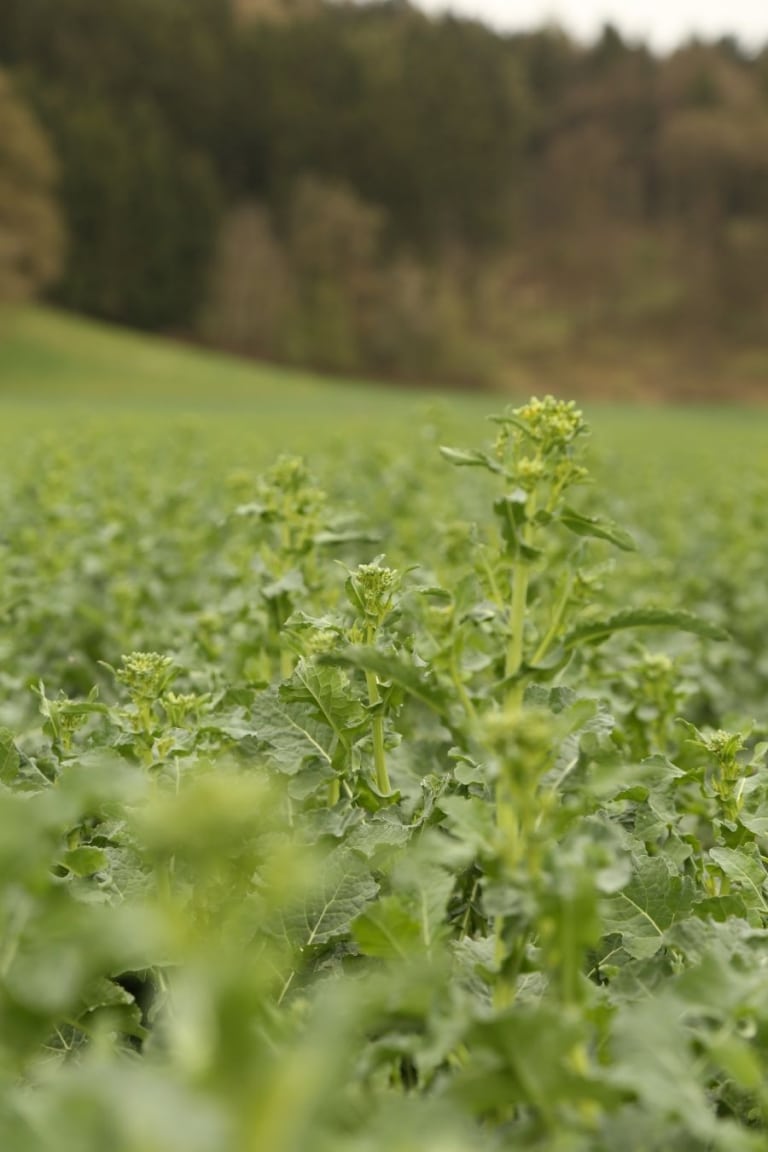OPTICARE
The premium seed treatment
In addition to a sufficient supply of the macro elements nitrogen, phosphorous, potassium and magnesium as well as sulphur and the trace element boron, molybdenum plays an essential role with rape seed.

The significance and function of molybdenon (Mo) in the plant
An essential plant nutrient, molybdenon contributes to important metabolic processes in a plant. Molybdenon plays a significant role in the nitrogen utilisation of the rape plant and contributes to the protein and pollen production.
Deficiency symtoms can be first observed on the youngest but also on the oldest plant parts. Chlorotic paleness, similar to the consequenes of nitrogen deficiency, are often only observed on the old organs. The probability for such a deficiency to appear increases with the nitrate share in nitrogen supply.
Conditions fostering molybdenon deficiency
- low molybdenon levels in the soil
- low pH value of the soil
- high level of iron oxides in the soil (in podsols and soils with bog iron deposits)
Molybdenon deficiency symptoms
- spoon-shaped leaves with darkgreen laminae
- pale-geen leaves and browning leaf edges
- asymmetrical leaf growth
- splitting leaf tips
How to avoid molybdenon deficiency
Liming soils or fertilisation with trace element fertilisers containing molybdenon can counter deficiency. Specific fertilisation is however an extra expense and should be applied before rape absorbs high doses of nitrate. Therefore, we studied the effect of seed treatment with molybdenon in our field trials. We were able to achieve an average excess yield of 170 kg/heactare at all sites – without incurring any extra cost for application. Especially in critical phases and under high abiotic stress, rape benefits from micronutrients.
That is why SAATBAU LINZ offers the premium treatment OPTICARE for its top varieties, containing the trace element molybdenon in addition to a fungicidal agent.
